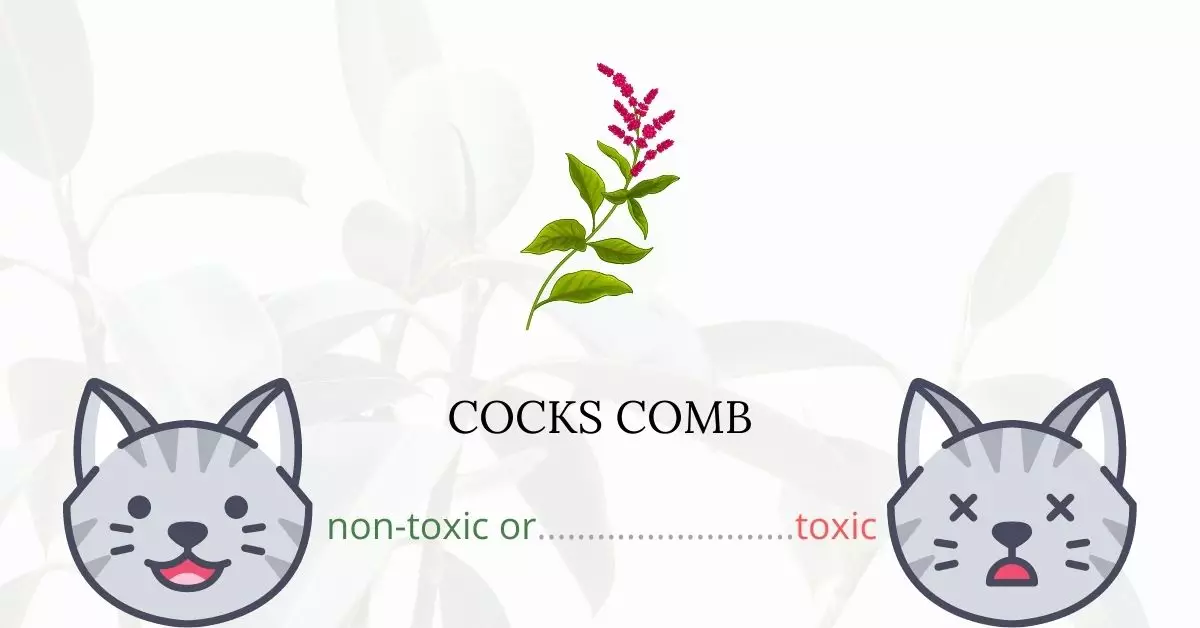Cocks Comb, also known as Prince’s Feather or pilewort, is not toxic to cats. Plants belonging to the Amaranthaceae family, of which Cocks Comb is a member, have been extensively researched and found to be non-poisonous to cats.
This information is not only based on our extensive research but has also been validated through collaboration with a team of experienced DVMs (doctors of veterinary medicine). With their expertise and contributions, we are able to provide our readers with accurate and up-to-date information concerning the potential risks associated with various plants. Furthermore, our claims have been cross-checked with high-authority sources such as the ASPCA and PetMD to ensure the utmost accuracy.
Thus, you can be confident in safely growing Cocks Comb both indoors and outdoors without posing any threat to your cats, dogs, or horses.
Can Cats Eat Cocks Comb or Prince’s Feather?
Cats, while being carnivores, eat a lot of greens: outdoor cats prefer grass, while indoor cats prefer houseplants. Unfortunately, many of the plants we have at home are poisonous to cats!
According to the American Society for the Prevention of Cruelty to Animals, your cat pals can chew on cockscomb without having to go to the vet as long as they don’t overeat.
Eating too many plants may cause indigestion to your felines buddies. Thus, you should not let your cat eat cocks comb freely even it is considered a safe plant for them.
What is Cocks Comb or Prince’s Feather?
The decorative plant cockscomb (Amaranthus hypochondriacus) is also known as Prince-of-Wales feather or prince’s-feather. Quelite, bledo, and quintonil are Spanish names for this native to Mexico plant.
It is recognized as a food source in Africa and El Salvador, as are many other Amaranthaceae species. The leaves and seeds are highly nutritious and have a mild flavor. Additionally, phenolic chemicals can be found in the seeds.
It is grown as a semi-hardy annual in temperate climates. It thrives in full sun and well-drained soils. It is a strong, upright plant that grows to a height of 40–200 cm. It’s popular for its blooms, which bloom in dense, catkin-like inflorescences in the summer and autumn. They are often deep purplish-red in color, but they can also be yellow-green. These give place to 1.5–3 mm long dry fruits that split open when ripe. The fruits contain smooth, shining seeds that range in size from subglobose to lenticular, and are 1–1.4 mm in diameter. The leaves are simple and alternately oriented, with whole margins. They have a rhombic-ovate to broadly lanceolate form and are borne on lengthy peduncles, measuring 4–12 cm long and 2–7 cm wide.
Keeping Cats Away From Cocks Comb or Prince’s Feather
It may not be clear to many cat lovers when their pet is bored with being left alone. Leaving them for long periods can result in unwanted behavior like destroying your beloved plants. Non-toxic plants are as appealing to your cat.
Putting your plants in pots or large planters, whether indoors or out, will elevate them so your pets can’t dig or gnaw on them. Plants should then be put on shelves that are too high for a jumping cat to reach.Place your plantson a balcony, sun porch, or room where your cat cannot get to them. To keep the cat out of the space, close any doors or use a gate.
Plants to Avoid For Your Cats
If you are a cat owner and unsure if the plants growing in your yard are harmful to your cats, check out this list of toxic plants for cats. You can also check our list of non-toxic plants for cats.





